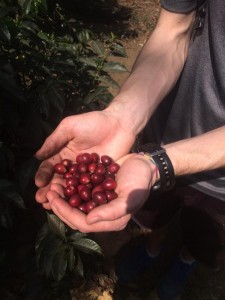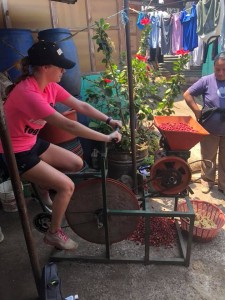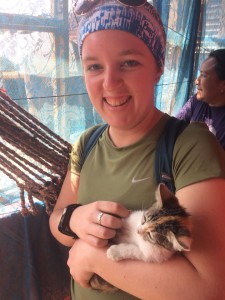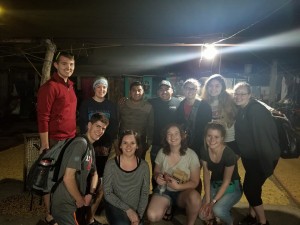This morning was filled with pineapple pancakes to prepare us for our coffee tour! We met up with Virgilia, one of the only 3 women in the co-op and first to join, to head to Agua. Families have plots of land on Agua and some have to hike up to 3 hours to get to their coffee trees. The plot we were at was thankfully only a 30 minute hike. Once we arrived, we learned how they originally plant the coffee trees, how to maintain them, and where the coffee bean actually comes from. Each tree has many branches which produce clusters of cherries which hold 2 coffee beans each. It is important to make sure the cherries are a dark red cranberry-like color before harvest. If they are picked too soon, 1 unripened cherry/coffee bean cancels out 56 ripe ones which can interfere with the taste of coffee. As we picked them, we learned there are many, many steps from planting the first seed to brewing the coffee at home.
The process includes: picking the cherries, de-pulping (getting the coffee beans out of the cherries), fermenting (roughly 24 hours), washing (done 3 times), and the longest part of the process is drying the beans out. Drying the coffee beans takes 8-12 days. After drying, an important part is taking off the outer parchment and sorting by size then going through defects such as unripe or overripe beans. Once the best beans are chosen, they are roasted in a big clay plate over a heated stove. To keep track of roasting time, you keep track of the different aromas, color, and the extra layer of parchment coming off of the beans. They are then moved into a pan and stirred to cool off the beans faster before grinding on a stone grinder by hand. Once they were ground down enough (which Virgilia did much better than we did), we poured the grounds into a large boiling pot of water and let it sit until ready. We sat around the table drinking our freshly roasted and brewed coffee while learning about her experiences as a female farmer, within the co-op, and about her family and children. We had lunch with her and were on our way back to our residence before learning more about De La Gente and participating in our own cupping (coffee tasting) and brewing methods.
It was a long day of learning about the hard work that these coffee farmers go through every day during each season from start to finish. We’ve had a lot of delicious coffee, but the most important aspects of the day were learning more about their every day lives, the work they do, and the importance of appreciating what you have and the people around you.
Tomorrow is a full day of touring Antigua and checking out the markets, so we will say buenos noches!







Recent Comments